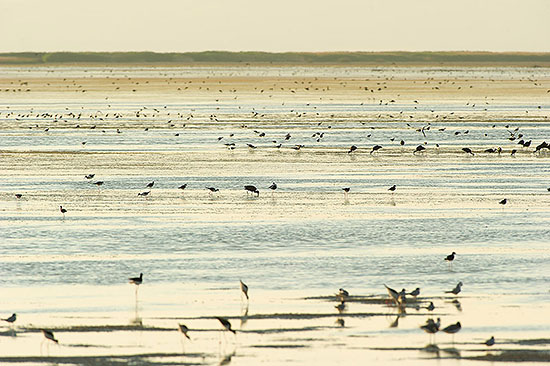In the north of the Great Salt Lake basin, lies a huge wetland around the Bear River: the Bear River Migratory Bird Refuge. During the summer months, temperatures rise easily above 40 °C, and the amount of open water and wetland is severely reduced by the evaporation. Hence waterbirds are amazingly concentrated around the lakes at close vicinity of the visitor’s centre. There are thousands and thousands of waders of all kind, ducks, grebes, white-faced ibises, herons, egrets, gulls, terns, pelicans, cormorants, etc… All of them in reasonable to exceptionally large numbers. Really impressive!
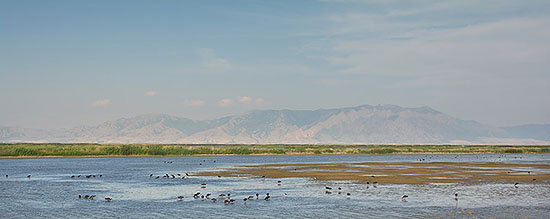
We spent an entire day in the reserve. This is on one hand way too short to see all the species occurring there, but on the other hand it allows one to build up an impressive bird list, combined with observing amazing numbers of some of the species. Under here some images from the lake.
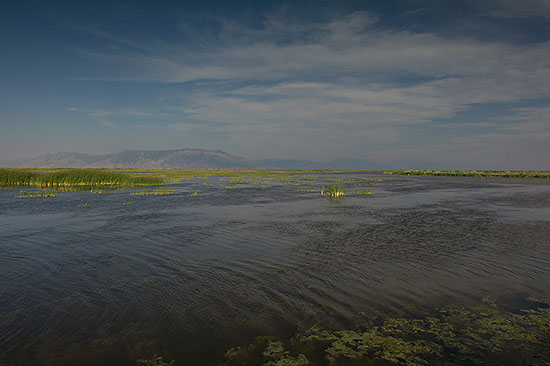
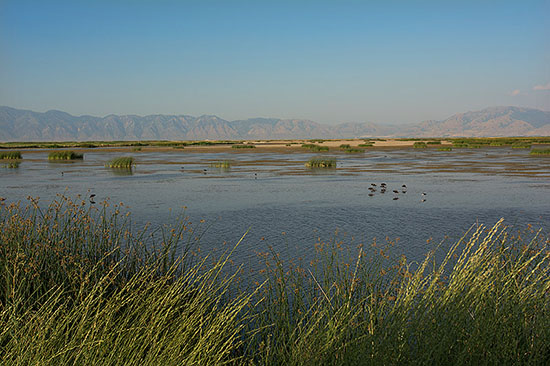
Dragonflies
Apart from the vertiginous numbers of birds, the place is also a paradise from dragonflies, which can be seen in great numbers hunting above the wetlands. Under here, images from the Eight-spotted Skimmer, Libellula forensis, Western Pondhawk, Erythemis collocata, and Blue-eyed Darner, Rhioaeshna multicolour.
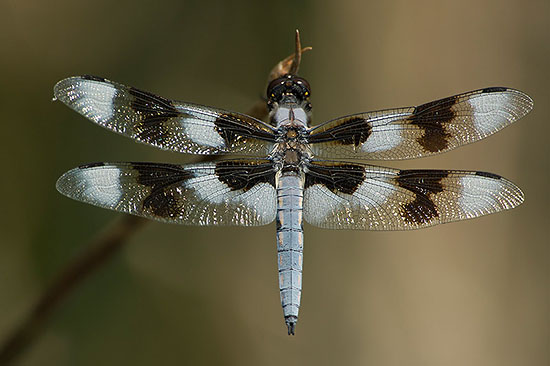
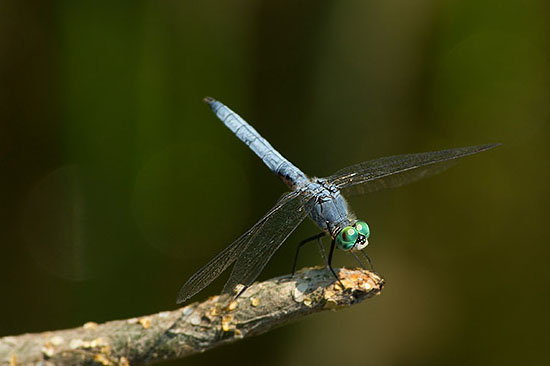
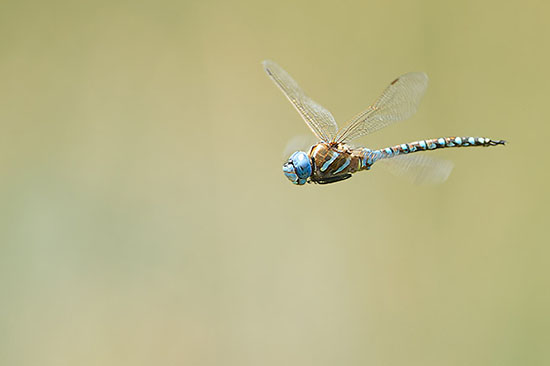
Wetland Birds
One of the first omnipresent species one comes across while driving towards the lakes are the White-faced Ibises, Plegadis chichi. Although they breed and forage on the lakes, they can often be found on the wet fields surrounding the lake. About every few minutes or so, small or larger parties can be seen flying towards their foraging places. Under here some images from White-faced Ibises in flight.
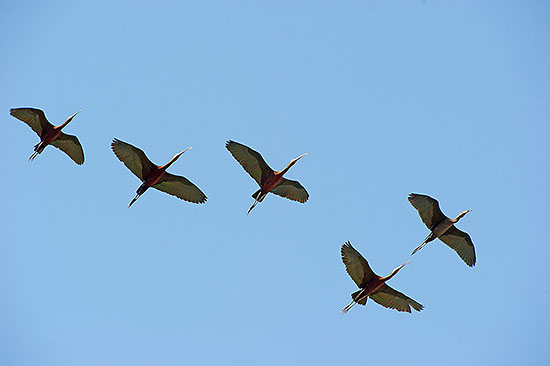
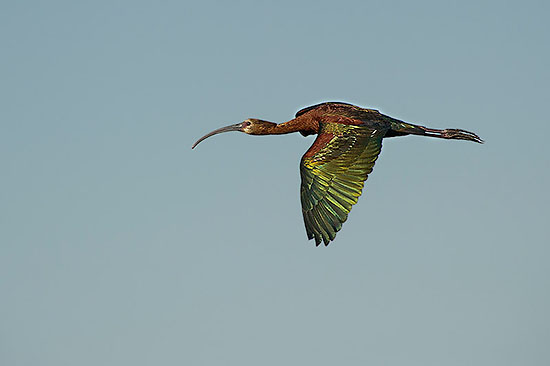
Great Blue Heron, Snowy and Cattle Egrets and Black-Crowned Night Herons are all regularly seen in the area. Although not observed during our short stay in the Refuge, American Bittern is also present. Under here an image form Great Blue Heron, Ardea Herodias.
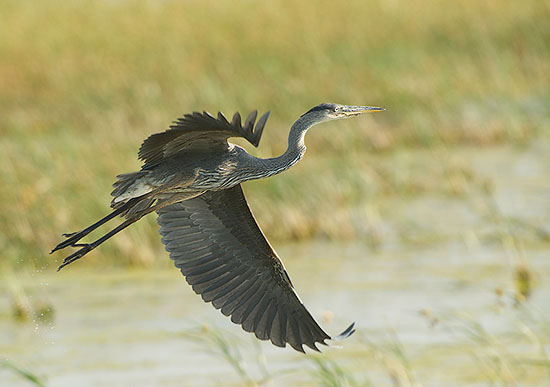
The area is also rich in songbirds, such as Yellow-headed Blackbird, Xanthocephalus xanthocephalus and Marsh Wren, Cistothorus palustris which are present in the dense bulrush wetland vegetation. Savannah, Passerculus sandwichensis and Song Sparrows, Melospiza melodia can be found in the fields and marshes. The buildings of the visitor centre are home to a large colony of Cliff Swallows, Petrochelidon pyrrhonota (image under here), but the species is also present everywhere above the marshes.
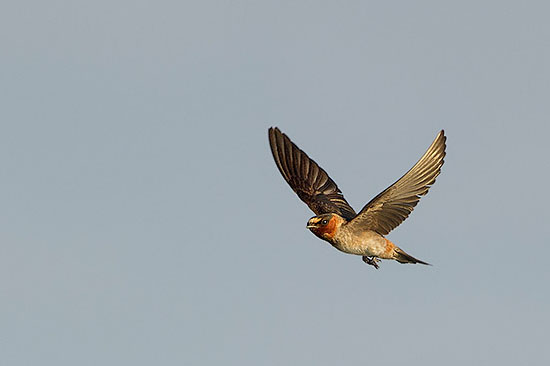
This rich wildlife attracts a lot of birds of prey. We observed frequently Swainson ’s hawk, Buteo swainsoni, often in the dryer areas around the lake, while Northern Harriers, Circus hudsonius can easily be seen hunting low above the edges of the marshes. Under here images from Peregrine Falcon, Falco peregrinus and Turkey Vulture, Cathartes aura; both were scavenging on the carcass of a dead viper.
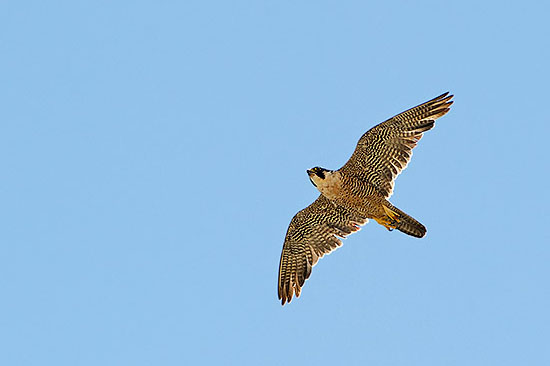
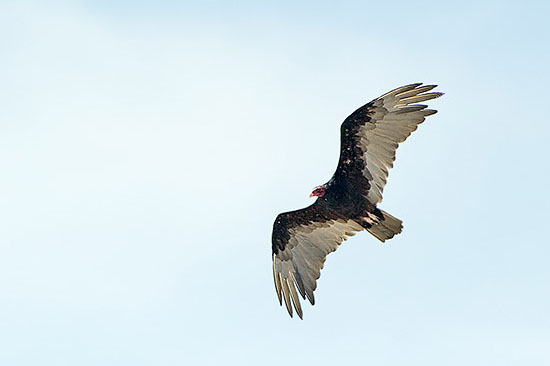
Caspian Tern, Hydroprogne caspia can often be seen hunting above the canals (image under here). Forster’s Tern, Sterna forsteri frequently hunts above the lakes (next image under here).
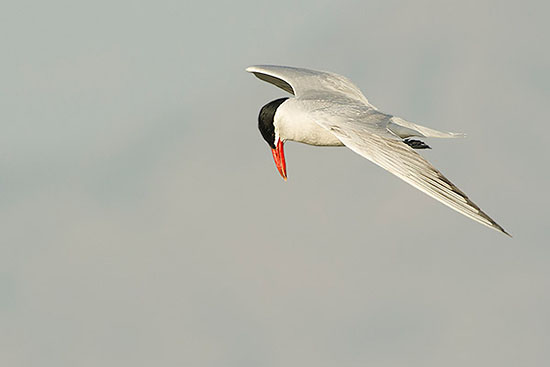
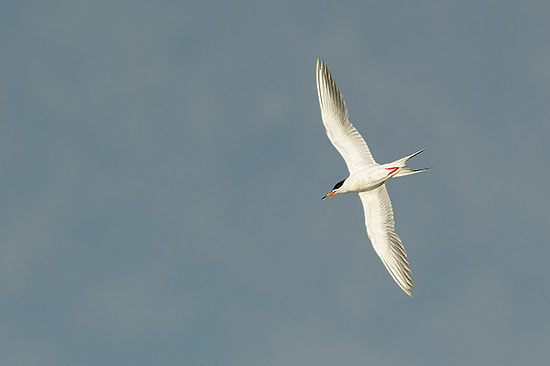
Cinnamon Teal, Spatula cyanoptera, is just one of the several Duck species which can be found on the lake. Other dabbling duck species we frequently saw, were Blue-winged Teal, Green-winged Teal, Shoveller, Mallard and Gadwall.
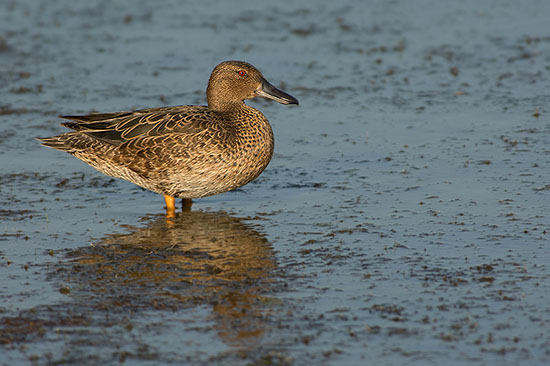
American White Pelican, Pelecanus Erythrorhynchos, (image under here) can be seen along the canals, as well as on the larger lakes. Most of them belong to a population which breeds on islands on Great Salt Lake.
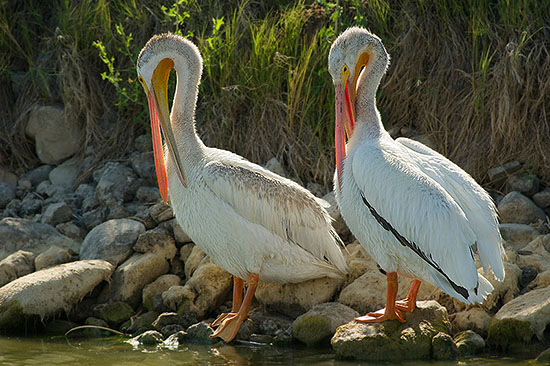
Western Grebes, Aechmophorus occidentalis (first two images under here), are very common; they are found on the smaller canals as well as on the larger waterbodies. Clark’s Grebe, Aechmophorus clarkii is a little less common and was mainly found on larger open water, fringed with rushes, where they feed on the deeper parts (next two images under here). They can be distinguished by the colour of their bill (yellowish-orange – versus the yellowish-green bill from Western Grebe) and more white in the face resulting in the eye surrounded often by white in the breeding season.
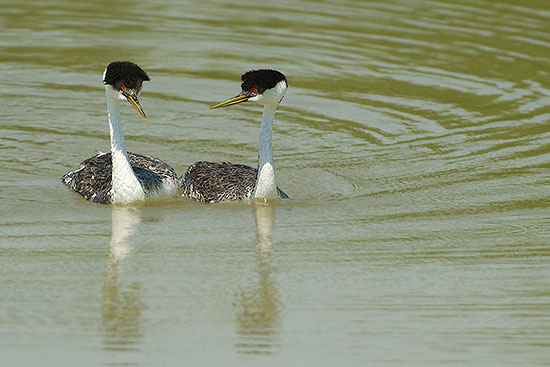
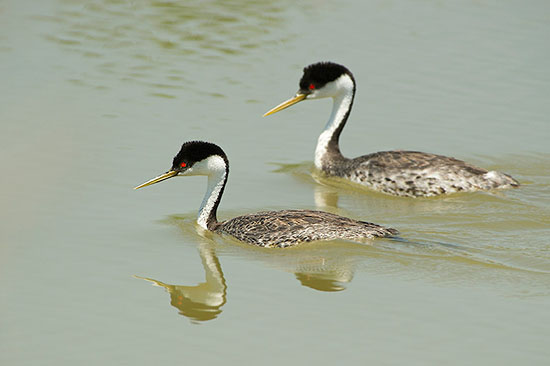

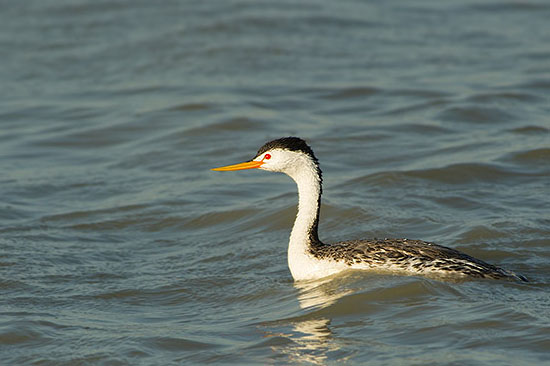
Least Sandpiper, Calidris minutilla and Killdeer Plover, Charadrius vociferus are two of the wader species we observed on the muddy shores of the lake (next two images under here).
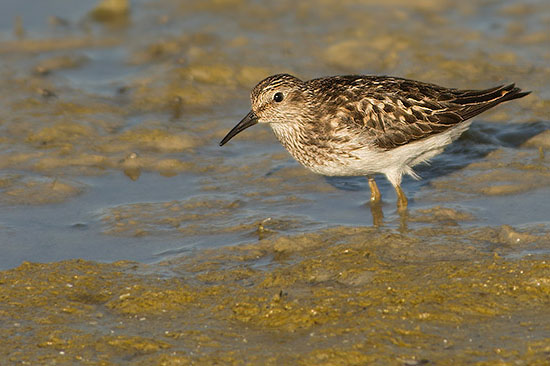
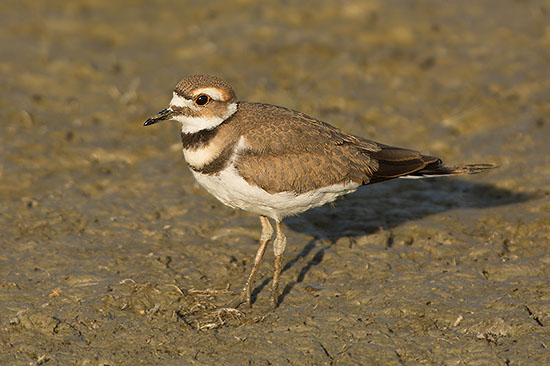
American Avocets, Recurvirostra americana can be found everywhere on the mudflats and are really numerous (next two images under here).
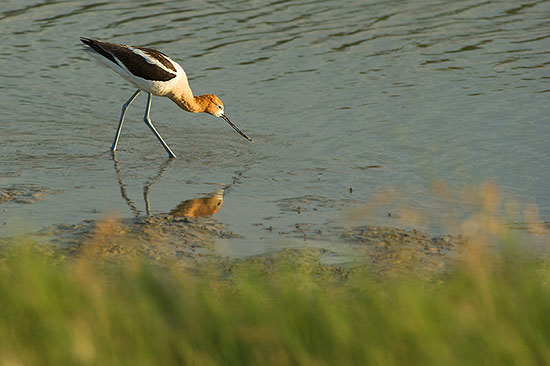
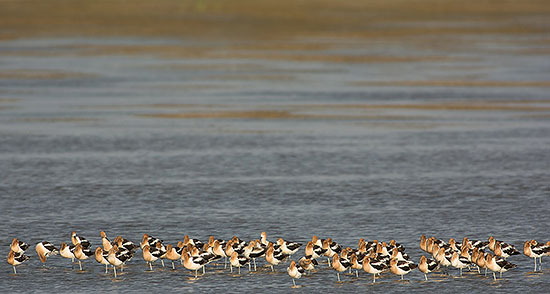
Black-necked Stilt, Himantopus mexicanus is even more common, the image under here gives an idea how numerous they are.
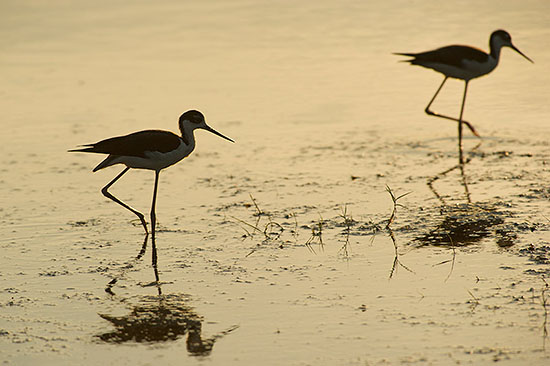
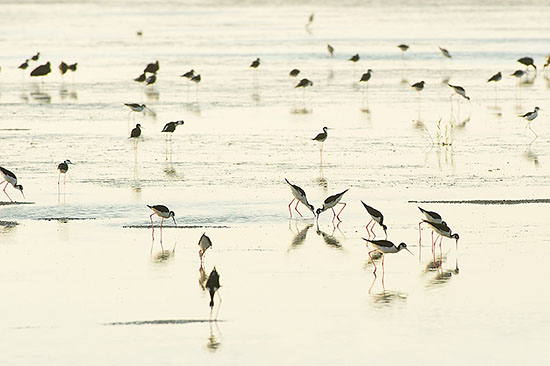
During the evening, large numbers of White-faced Ibis were foraging in the shallow waters of the lake. On the background of the first image under here, large numbers of dabbling ducks and Black-necked Stilts can be seen.
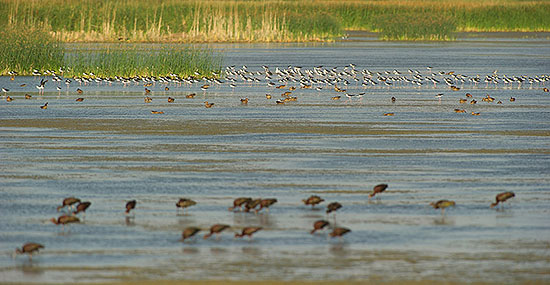
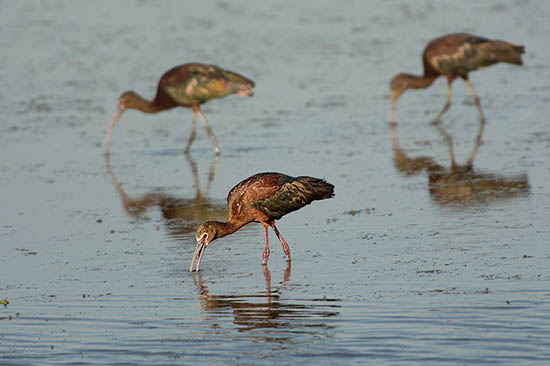
Sandhill Crane, Grus canadensis is a breeding bird found at low densities in the area (image under here).
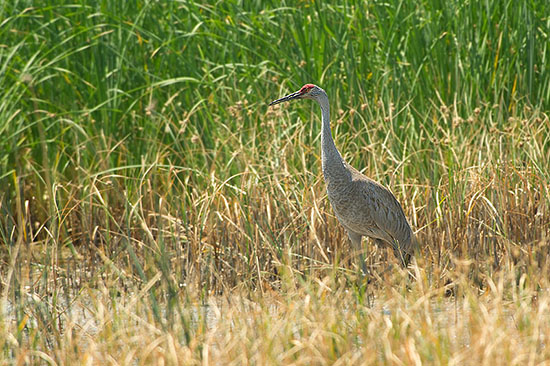
A rather secretive species, is the Sora, Porzana Carolina (image under here), which lives in the dense rushes and sedge vegetation. The fact that rails are mainly active at night and in the evening makes the bird even more difficult to observe. However, once one knows their call, they seem to be not so uncommon. Waiting in the evening at a place where one has a relative ease to overview some muddy shores along the dense vegetation can be a good way to find these secretive little fellows.
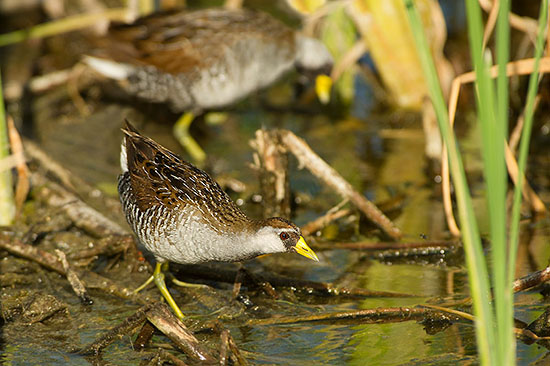
I’ll end with an image illustrating the huge number of birds. On this image the keen observer can see Black-necked Stilts, White-Faced Ibisses, Forster's Terns and American Avocets.
